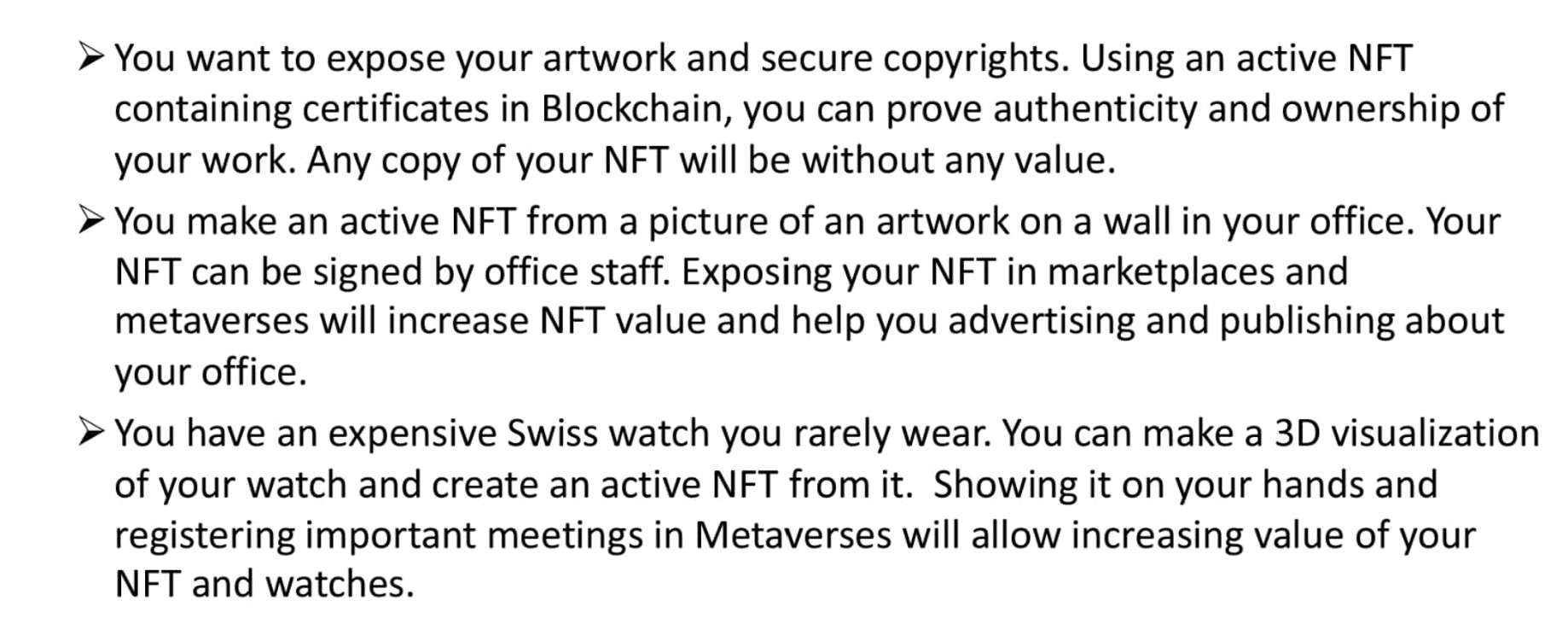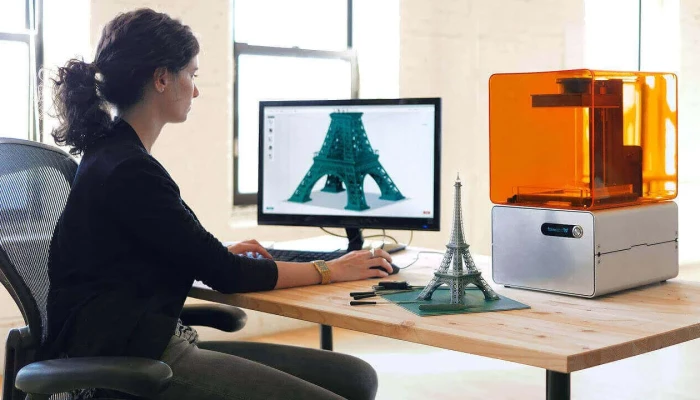What are Active NFTs? – The Ultimate 2022 А-NFT Guide
NFTs (non-fungible tokens) inaugurate the next stage in asset ownership characterized by transparency and decentralization. Furthermore, NFTs have grown extremely popular in the last couple of years, and tokens are selling for astronomical amounts.
Moreover, two defining attributes of traditional NFTs are their uniqueness and the inability to replicate/forge these digital assets.
However, the one-of-a-kind exclusivity of these tokens somewhat limits an NFT holder’s possibilities. This has led to innovation within the NFT space and resulted in two exciting concepts: dynamic NFTs and A-NFTs.
All QUASA dApps are cross-chain by default. Building on QUASA NFT ensures that your NFT is future-proof.
Even if new blockchains are invented, your QUASA NFT decentralized application will instantly certify NFT from any chain and make it active.
In this article, we’ll direct our attention to the latter and answer the question,” what are active NFTs?”.
The simplest explanation for active NFTs is that they are non-fungible tokens with their entire life cycle added to them. However, if you’d like to learn more about A-NFTs, follow along as we’ll dive deeper into the intricacies of active NFTs.
What are Active NFTs?
With the increased attention towards NFTs, we have further seen token prices surge exponentially. On occasion, NFTs representing artwork have sold for millions and millions of dollars.
Moreover, avatars from famous collections such as Bored Ape Yacht Club are becoming relatively pricey. This increase in demand and price escalation makes it prohibitively expensive to purchase NFTs.
High price tags, among other things, are due to high transaction costs for commissions in networks and create significant barriers to the market, as not everyone can afford to acquire NFTs.
One way to address this issue is through a certification process where active NFTs enter the scene.
So, what are active NFTs?
Active NFTs are non-fungible tokens certified on the blockchain, which contain all events, information, changes and additions, that is, the NFT life cycle. However, what exactly does this mean?
This essentially means taking an NFT and certifying the entire life cycle of a non-fungible token on the blockchain.
The certification process is done using smart contracts. The contract records events, history, and information with the original NFT and issues a certificate for signers to certify.
It is later possible to trade the fungible tokens representing the full lifecycle of an active NFT on an exchange or market.
To summarize, this basically suggests that an active NFT is a token that has additional information added and a certificates issued by the community or the author that allows the NFT to be associated with a physical asset allowing multiple different people to claim ownership of parts of the same NFT. In addition, all issued certificates can be verified by experts or the community even after they have been created.
Now that we’ve answered the question “what are active NFTs?”, let’s take a look at how the certification process work.
How Do Active NFTs Work?
In its bare-bone state, an NFT is a token that implements a particular standard. Two examples are Ethereum’s ERC-721 and BNB Chain’s BEP-721 standards, and both are used to regulate NFTs on the various networks.
Before the certification process, NFT tokens must be imported from a marketplace such as OpenSea, Rarible.
The QUASA NFT application today allows you to import NFT tokens made on the Ethereum or Solana blockchains from five marketplaces.
Once the original NFT is imported from the marketplace, the smart contract links the original NFT to a certificate of compliance on the blockchain.
Smart contracts are programs on a blockchain that can automatically execute functions when someone fulfills the predetermined conditions.
Each QUASA NFT smart contract is unique:
- contains metadata and hashes of issued certificates and events;
- tied to NFT and can be read from marketplaces or metaverses.
.png) In addition to the provided data, the certificate contains cryptographic data:
In addition to the provided data, the certificate contains cryptographic data:
- An NFT Hash is an identifier that is uniquely related to the digital NFT. If you make any change in the NFT, the least, even a single pixel, letter or bit, the Hash will be totally different, so this identifier ensures the NFT integrity.
- In order to verify QUASA certificates, every certificate has a unique ID, so you can access to our app and check the ID and the file in order to be sure the anything has been altered.
- NFT description Hash
- Transaction ID in the Quasa Chain blockchain
- Document ID (NFT) (smart contract address + token ID)
- Blockchain creates a universal time stamp in the decentralized database.
- The certificate in the application can be shared with other users and signed by other signers, in which case the certificate lists all signers.
For any user, the NFT certificate looks the same.
Data is stored securely and safety. Cryptographic proofs ensure that your data remains accessible and unchanged over time.
Dynamic NFTs vs A-NFTs
At this point, you should be able to answer the “what are active NFTs?” question with confidence. As such, let’s compare NFTs vs A-NFTs. Based on the explanation from one of the previous sections, the distinction between dynamic NFTs and A-NFTs is quite apparent.
But there are two more main differences, which are that the data collected by smart contracts and added to the dynamic NFT is not free, and also that any NFT is easy to copy.
That is why even in the metaverses you see passive pictures with outdated descriptions, because each transaction of writing to the blockchain is paid and the more data is collected, the more expensive it is to add them.
Main differences
- The QUASA NFT application makes NFT active on the blockchain - free of charge for all users!
- Active NFTs are a way to protect copyright. NFT is easy to copy, but NFT + its life cycle certified by the Certificate in the blockchain is impossible to copy!
And this is the main difference between A-NFT and Dynamic NFT. However, this further means that dynamic NFTs and A-NFTs are closely related as the latter results from the certification process of a traditional token.
What are Active NFTs? – Use Cases
Based on the above, it’s fair to assume that several interesting ways active NFTs can be used will emerge shortly. As such, this will add to the already large amount of use cases that are connected to traditional NFTs.

So far in our “what are active NFTs?” journey, we’ve looked at traditional NFTs vs A-NFTs, how active NFTs work, and what active NFTs are. Thus, let’s now explore what benefits active NFTs bring!
Benefits of A-NFTs
This section will present the most significant benefits of active NFTs.
First, we’re going to explain how A-NFTs open up the market to a broader range of investors. Following this, we’ll also cover how active NFTs can benefit owners and the problem of ownership. Lastly, we’re going to look closer at how A-NFTs can contribute to price discovery. Nonetheless, let’s initiate and take a closer look at how A-NFTs democratize the NFT space.
In the QUASA NFT application, absolutely anyone can create active NFTs for free.
One QUASA application is enough and users do not even need to connect any crypto wallet. There is no need to connect a crypto wallet and pay for certification, because the QUASA team has made an absolutely free application for all users.
Any user can create an active NFT for free.
There is no risk of losing money because users do not connect their crypto wallet and pay nothing for certification - this is QUASA know-how and the new evolutionary model of NFT 2.0
For creators, authors, owners - QUASA offers to certify and confirm the ownership of NFT.
You do not need to study the legal bases of different countries, know how existing or new blockchains work, worry about security in connection with connecting a personal crypto wallet to unknown applications.
You just need to be the author or owner of the NFT, and that's all you need! All your data is under your control. Verify your NFT rights in a couple of clicks.
What are Active NFTs? – Summary
NFTs have quickly emerged as one of the crypto industry’s most prominent features. As such, developers are directing their attention towards NFTs, and we have seen new, creative innovations within the field. Two examples are dynamic NFTs and active NFTs. In this “what are active NFTs?” article, we focused on active NFTs and set out to answer the question, ”what are A-NFTs?”.
Active NFTs are NFTs in which their life cycle, all events, documents and history have been added using smart contracts. We call this process "certification". Moreover, it provides the NFT realm with more accessibility as it allows you to add and authenticate the author, owner of the NFT, and link the physical asset to the NFT.
Linking active NFTs to physical assets provides additional benefits and opportunities:
- blockchain security (certificate of ownership and NFT authentication);
- representation of active NFTs in virtual spaces (metaverses) and on marketplaces.
Active NFTs provide loads of benefits such as:
- Full NFT life cycle certification including all events and history;
- Associating a Physical Object with an NFT;
- Copyright and property rights protection for owners;
- Transition from passive traditional NFTs to active A-NFTs;
- Decentralized A-NFT signing by experts or the community on the blockchain.
As such, they have the potential to influence several aspects of the entire market positively. For example, A-NFTs make it possible for investors to purchase more sought-after and valuable (certified) NFTs; meanwhile, it also provides a larger market for potential sellers.
NFTs aren’t just digital pieces of art. They are layered mechanisms for proving ownership, access, rights, and more.
Quasa NFT App is Your Protection For NFT! Your NFT, your way!






